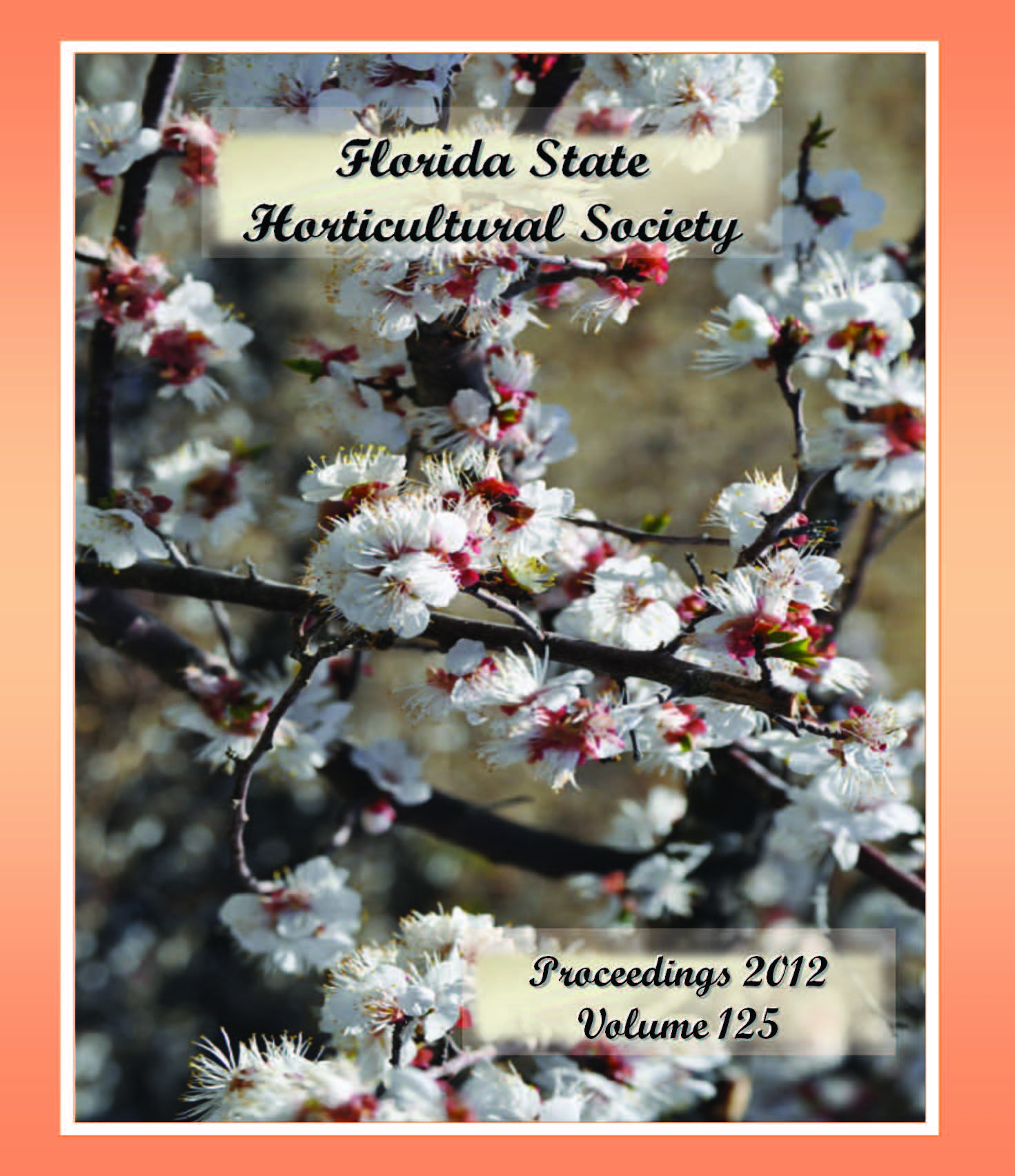Published 2012-12-01
Keywords
- Cercospora apii,
- Apium graveolens,
- chemical control,
- disease management,
- fungicides
Abstract
Early blight, caused by Cercospora apii, is the most serious disease of celery in Florida. A field experiment was conducted during the 2011–2012 growing season to investigate the efficacy of chemistries that are considered “low-risk” for management of this important disease. Three plant activators (Systemic Acquired Resistance or SARs) were investigated, alone and in combination with supplementary foliar treatments (one of two copper fungicide treatments or one biofungicide). Treatments were arranged in randomized complete blocks with four replications of 13 treatments. Additionally, experimental units receiving the supplementary foliar sprays were divided in half, with one half being sprayed once a week, and the other half being sprayed twice per week. Acibenzolar (Actigard), anthraquinone (Regalia), and laminarin (Vacciplant), provided significant suppression by themselves when applied on a 9–10 day schedule, but early blight management was significantly enhanced when topped with foliar applications of copper fungicides (Kocide 3000 or Phyton 27) or the biopesticide Bacillus subtilisQST713 (Serenade Max). Celery treatments receiving two applications of the foliar materials per week provided significantly better control than those receiving only weekly applications. Although providing significant control, none of the low-risk treatment combinations provided control equal to that provided by several strobilurin treatments in an adjacent trial. It is important to note that activators were applied prior to disease onset and no phytotoxicity or yield drag was observed.

